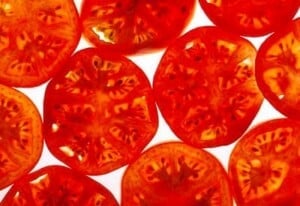Gardeners have been using kelp and seaweed extracts for years, outdoors and in. The results are well-known. Seaweed is a tonic for plants at all stages, stimulating root growth, aiding chlorophyll production, invigorating cuttings and bare root starts. It delivers small amounts of nitrogen, potash and phosphorus and contains a wide spectrum of trace minerals in a form that plants can use. It contains other nutrients, including plant hormones and amino acids.
Kelp products come in many forms. Those who live along clean, coastal waters are known to collect it, rinse it well to remove salts and add it to their compost piles (seaweed collection is often requires a permit; check your state and local regulations). It’s often diluted for use as a fertilizer in regular watering of plants and used as a foliar spray to invigorate plants and help control fungus and pests like aphids. Some gardeners — I’m one of them — truly see it as a miracle product.

#1 KELP EXTRACT
Maxicrop
Contains over 70 minerals, micronutrients, amino acids and plant vitamins.
Learn moreDerived from fresh Norwegian sea kelp (Ascophyllum nodosum), Maxicrop Liquid Seaweed contains over 70 minerals, micronutrients, amino acids and vitamins. It is a non-polluting, renewable plant food that is OMRI listed for use in organic farms and gardens. Perfect for trees, shrubs, flowers, lawns, fruits and vegetables.
In the last couple years, the U.S. Environmental Protection Agency has looked at some kelp and seaweed fertilizers and decided that they should fall under one of two categories. It’s either a plant growth “regulator” (PGR) or a plant “vitamin hormone.” As a plant growth regulator, seaweed must be put through a lengthy process that includes long and expensive testing. As a plant hormone, it must carry an EPA-approved statement that says it is not approved for use on food crops. It also requires careful labeling. No fruit or vegetables, say a tomato, can be pictured on the label. That would be a violation of EPA rules and would carry a stiff fine.
The designation may seem strange to those of us who’ve used kelp fertilizer products on everything from our houseplants to our vegetable gardens. What difference does it make what you label the mechanisms that make the amendment so effective? Liquid seaweed is, of course, still available and no different except for the label on the bottle. Individual gardeners will want to make their own decisions on taking precautions with these naturally derived products. If your houseplant needs a perk-up, I wouldn’t hesitate. But after years of success using it on tomatoes, I think most of us would decide to stop using it somewhat resentfully, if that indeed is what we decide.

There is some evidence that suggests kelp does have PGR properties. This study suggests that some of the benefits include potential PGR activity which may make it a growth regulator. The study’s abstract states that the mechanism by which these products work is not well understood. What harm they might have on humans doesn’t seem to figure in.
Gardeners, especially organic gardeners, are well-practiced at taking precautions with even the safest of products they use on their homegrown produce and even on their lawns and flower gardens. No doubt, that will be the case here, even as common sense prevails.











